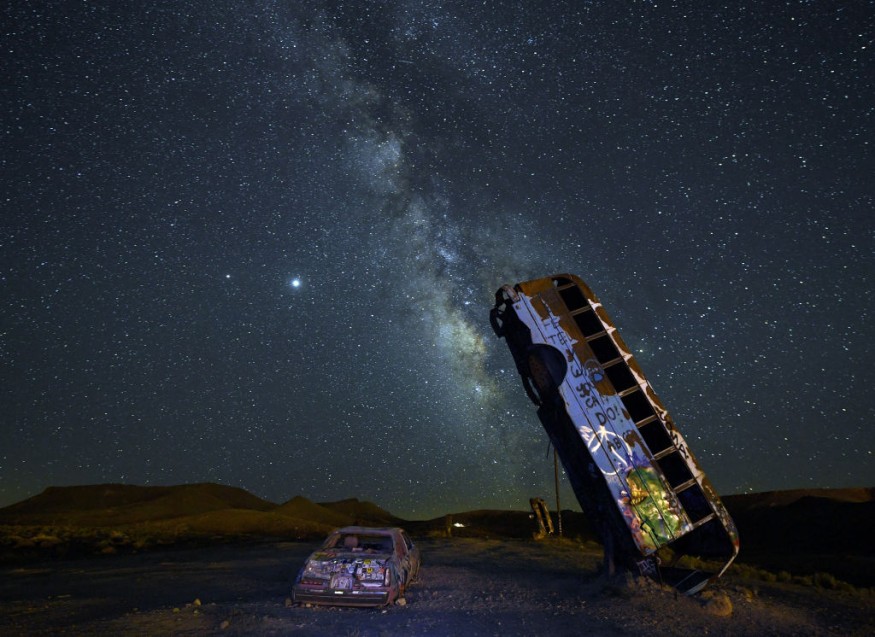Our Milky Way galaxy is riddled with streams of stars, one of which appears to be a family of roughly 500 members, a study claimed. One of these celestial streams stretches out over 1,600 light-years.
Astronomers have detected 8,292 stellar streams in our galaxy, CNN said. Streams generate linear patterns rather than star clusters.

Theia 456 Hid From Astronomers From A Long Time
Theia is the Greek Titan goddess of seeing and heavenly light, and each stream is named after her.
Astronomers studying Theia 456, using data from the European Space Agency's Gaia space satellite, discovered that all 468 stars in this stream were created simultaneously. The stretched stream of stars is travelling across the sky in the same direction.
Researchers announced the discovery during the American Astronomical Society's 237th meeting which is being held virtually due to the pandemic.
"Most stellar clusters are formed together," said study author Jeff Andrews, a postdoctoral fellow at Northwestern University and its Center for Interdisciplinary Exploration and Research in Astrophysics, in a statement released by the university.
The unique feature of Theia 456, according to Andrews, is that it is not a small cluster of stars. Instead, he said it is long and slender. There are only a few adjacent streams that are young and widely dispersed, he added.
Because it dwells in the galactic plane, where it may easily be covered by the Milky Way's 400 billion stars, the stellar stream has stayed hidden from astronomers for a long time. The galactic plane contains the majority of a galaxy's mass.
Stellar streams are typically discovered outside of our galaxy using observatories pointing away from the Milky Way.
"As we've started to become more advanced in our instrumentation, our technology and our ability to mine data, we've found that stars exist in more structures than clumps," Andrews said per EarthSky. He said the stars usually make these streams across the sky. Although astronomers know about these for decades, they started to find hidden ones.
The stars in Theia 456 are similar in composition, containing roughly the same amount of iron. This indicates that the stars formed in a cluster some 100 million years ago.
Astronomers also examined how the brightness of these stars has varied over time and discovered that they rotate at the same pace. This is evidence that they are of the same age.
Astronomers, according to Andrews, point their telescopes in different directions because it's simpler to find objects that way. But he did admit that the community is beginning to discover these streams in the galaxy itself. He likened it to locating a needle in a haystack or a ripple in the ocean.
ALSO READ : New Dark Matter Map of Universe Could Prove Albert Einstein's Theory of Relativity Wrong
NGC2516 Extends No Less Than 1,600 Light-Years
Two years ago, Gaia satellite data showed that many distant stars move at the same speed and direction and could belong to the same open cluster.
Astronomers have now confirmed that one of the star currents, NGC 2516, commonly known as the Southern Hive, spans at least 1,600 light-years, or 500 parsecs, from one end to the other. A parsec is used to measure the large distances to astronomical objects outside the Solar System, approximately equal to 3.26 light-years or 30.9 trillion kilometers (19.2 trillion miles).
To an Earth-centered stargazer, that would appear to be 40 full moons strewn across the sky, side by side.
Phys.org said the American Astronomical Society will publish the upcoming research study led by Luke Bouma, a graduate student in astrophysics at Princeton University.
According to Lynn Hillenbrand, a 1989 Princeton graduate and professor of astronomy at the California Institute of Technology, Gaia's data enable scientists to trace the process of star mass production and disintegration in unprecedented detail.
However, Hillenbrand stated that astronomers require independently calculated ages to complete the picture.
One theory is that the cluster starts out as a small bulge that grows over time to generate "tidal tails" that spread before and behind it as it travels through the Milky Way.
He explained that the bigger implication is that there should be more large events like this. The visible section of the cluster, where we can see the stars close together, could represent a small component of a much bigger current.
Astronomers have measured star rotation rates obtained by Gaia's analysis of NGC 2516 using data from the Transiting Exoplanet Reconnaissance Satellite (TESS). According to the researchers, many stars with comparable masses orbit at the same speed (or extremely close), indicating that they were all born in the same stellar nursery.
The researchers spent years building methods to quantify a star's age by measuring its rotation, a technique known as gyrocronology (from the Greek words for "rotation" and "time").
Our Sun, at 4,600 million years old and in its calm middle age, spins every 27 days, researchers said. Because they are substantially smaller, the stars in NGC 2516 rotate 10 times quicker than our Sun. These stars are only roughly 150 million years old and have barely grown.
Learning more about star formation in galaxies may lead to a better understanding of the cosmos and how galaxies and stars came to be.
Check out more news and information on Space on Science Times.












